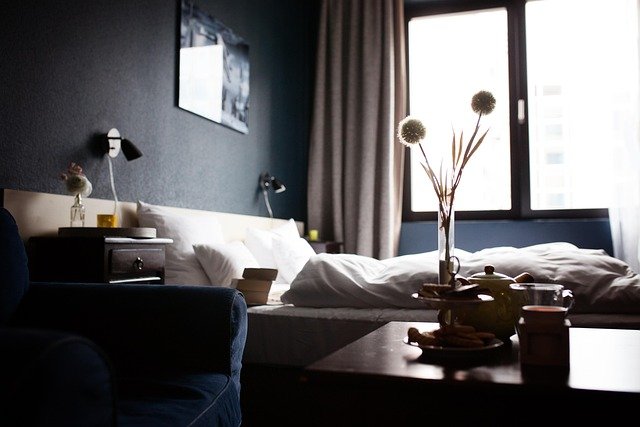Acoustic approaches to reduce noise and improve nighttime rest
Reducing nighttime noise in a bedroom improves sleep quality and daytime functioning. This article outlines practical acoustic approaches that work alongside thoughtful layout, lighting, ventilation, and storage to create a calmer sleep environment. It covers textile choices, decor and color considerations, ergonomic placement of furniture, and mattress-related tips to support quieter, more restorative nights.

How do acoustics affect sleep?
Acoustics have a direct influence on sleep through both sudden disturbances and persistent background noise. Sound reflections from hard surfaces raise perceived loudness and can fragment sleep cycles. Addressing acoustics means considering absorption, diffusion, and isolation: soft textiles absorb mid-to-high frequencies, diffusive elements scatter sound to avoid sharp echoes, and isolation strategies limit noise transmission through walls, floors, and windows. Together these measures reduce nighttime awakenings and help maintain deeper, more continuous sleep.
How can layout and organization cut noise?
Thoughtful layout and careful organization reduce both airborne noise and vibrations. Position the bed away from shared walls, noisy machinery, or rooms with higher activity. Use storage and shelving as soft baffles—filled bookcases and strategically placed wardrobes add mass and irregular surfaces that interrupt sound pathways. Maintaining clear organization prevents clutter that can rattle or amplify sound. A layout that separates sleeping areas from active zones and integrates storage near noise sources helps protect sleep without major renovation.
Which textiles and decor choices help?
Textiles are a practical first step for acoustic improvement. Layered curtains, thick rugs, upholstered headboards, and wall-hung fabrics absorb reflections and soften transient noises. Choose dense weaves and higher pile rugs for better absorption; hanging a tapestry or acoustic fabric panels behind the bed dampens rear reflections. Decor elements like fabric-covered artwork or cork boards add discreet absorption without changing the room’s character. Color and decor influence perception too: cooler, muted palettes can make a space feel calmer even while the textiles do the acoustic work.
How do ventilation and mattress choices matter?
Ventilation affects noise both directly and indirectly. Mechanical ventilation units can generate constant low-frequency hums—select quieter models, insulate ductwork, or add sound baffles to vents. Controlled fresh-air circulation reduces the need to open windows, which can allow external noise inside. Mattress choice influences vibration and impact sound; denser, well-constructed mattresses often dampen movement noise better than thinner alternatives. While mattress selection is primarily for comfort and support, choosing one with good motion isolation properties reduces shared-sleep disturbances.
What role do lighting, color, and ergonomics play?
Lighting and color shape the perceived quiet of a room by affecting relaxation and arousal. Dim, warm lighting and calming color schemes support the transition to sleep and can reduce sensitivity to minor noises. Ergonomics means placing furniture and fixtures where they support restful routines—bedside lighting within easy reach, outlets positioned to avoid stretched cords that might create tension noises, and bedside storage that prevents nocturnal rummaging. These design decisions minimize accidental sound production and maintain a predictable, soothing environment.
How to implement practical soundproofing and maintenance?
Start with low-cost interventions: add rugs, seal gaps around doors and windows, hang blackout and heavy sound-attenuating curtains, and use weatherstripping to reduce drafts and noise paths. For more involved solutions, consider adding mass-loaded vinyl behind wall coverings, decoupled drywall assemblies, or resilient underlayments beneath flooring to limit impact noise. Regular maintenance—tightening loose fixtures, cushioning noisy drawers, and ensuring HVAC components are mounted and insulated—keeps incidental noises from worsening. Combining small upgrades yields noticeable reductions without full-scale renovation.
This article is for informational purposes only and should not be considered medical advice. Please consult a qualified healthcare professional for personalized guidance and treatment.
Bedrooms are personal spaces that benefit from a layered approach to sound control. By addressing acoustics alongside layout, storage, textiles, ventilation, lighting, color, ergonomics, and mattress selection, you can create a quieter environment supportive of uninterrupted nighttime rest. Incremental changes—from rugs and curtains to strategic furniture placement—deliver practical gains that improve sleep quality over time.





